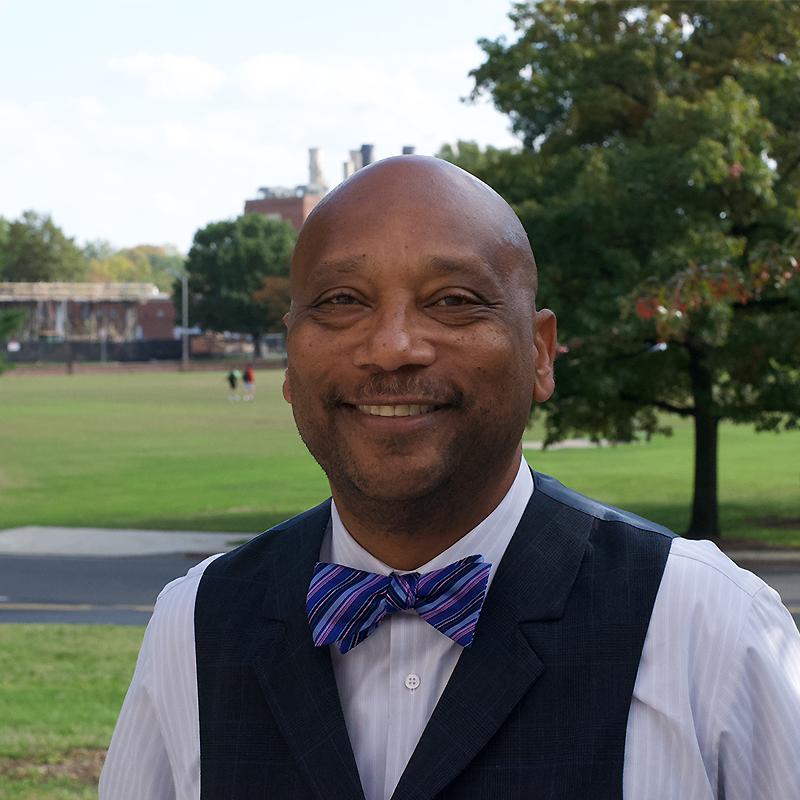News Story
Bright Idea: Solar 'Village' Lights Up Mall
By Benjamin ForgeyWashington Post Staff Writer
Saturday, September 28, 2002; Page C01
Take the energy of several hundred college students, mix well with donations from companies big and small, add generous dashes of inspiration and a bucketful of opportunity, and you get . . . a solar subdivision on the Mall.
It is an odd, invigorating sight. Fourteen diminutive houses, each meeting all of its own energy needs by harnessing the power of the sun, are lined up on either side of a walkway right down the middle of the Mall's central greensward.
Called the Solar Decathlon, the temporary village (it will stay in place until Oct. 6) is the brainchild of a dedicated bureaucrat at the Department of Energy. With the Capitol dome and the Washington Monument as background decoration, it's probably the best advertisement solar housing has ever had in this country.
"There are two myths about solar energy for homes," says Richard J. King, the 16-year Energy Department veteran who conceived the decathlon. "One is that it doesn't work, the other is that it doesn't look good. We're here to prove the opposite."
Most of us know at some level that solar power works, that we cannot live without the sun and that, somehow, we ought to live better with it. And we know, or ought to, that solar power is a potent, clean alternative to dirty -- if so far cheap -- fossil fuels. Even the most flagrantly outsized and egregiously sited McMansion utilizes sunlight for some heat and comfort, albeit in a half-baked fashion.
But in the competitive market to furnish our homes with energy -- or, for that matter, most of our work- and play places -- solar power has been a dud because it does not deliver the amounts we demand at prices most of us would be willing to pay.
And for decades solar design suffered outcast status because in reality (not myth) most of the solar homes produced since the energy crises of the 1970s look like outcasts. They're bunkers and earth mounds for true believers only, rather than regular folks.
This is changing, though seemingly at a snail's pace -- renewable energy sources such as the sun account for only 4 percent of the nation's energy consumption. Still, the technology for transforming sunlight into electrical energy gradually has improved, and prices are coming down. Awareness is spreading (gradually) about the advantages of "passive" solar design -- situating a house to take proper advantage of prevailing sunlight and winds, for example.
The Solar Decathlon is intended, then, to speed up the pace of change, and it may well succeed. It is guaranteed to sharpen the awareness of anyone who visits the section of the Mall between Fourth and Seventh streets during the event's two-week run, for it is a spirited outpouring of mental and physical energy.
Beyond this immediate impact, the event is sure to stimulate more research and development, for the results-oriented format emphasizes both innovation and performance.
Each of the houses was designed and built by a collegiate team, mainly architecture and engineering students. The teams, each drawn from different institutions, had to follow a few basic rules concerning size (of necessity, very small), height (18 feet tops) and internal uses and fixtures (kitchen, bedroom, living-dining area, bathroom, laundry facilities, home office).
In all other respects, the teams were free to follow their own inclinations, though costs were a big factor for everyone. The figures I heard most often during visits to the site were $240,000 and $250,000, and these did not include major equipment donations from local and national companies or thousands of hours of student labor. Clearly, fundraising was a big deal for the past two years in 14 college towns.
The proof of all this work will come in the testing. There are 32 monitors in each house, measuring things such as the efficiency of appliances; interior comfort (a constant temperature of 72 degrees is required); hot water for bathing (daily showers are a must), laundry and dishwashing; lighting quality; home business operation; power generation for an electric car; and overall energy efficiency.
Information from these monitors will be wirelessly fed to a databank every 15 minutes (and can be checked up-to-the-minute, organizers say, at www.solardecathlon.org). At the end of the houses' stay on the Mall, the one with the highest point total (100 points max per test) will win the monitored part of the competition. Three other tests, however, will be human-judged: graphics and communication, presentation and simulation, and design quality.
The design test, deservedly, gets a little more weight than the others -- 200 points. "Architecture is just so important," explains King. "We need the architects of the world to learn about solar energy and start using it."
Actually, architects worldwide have been paying some attention to sustainable design of late, but most of the focus has been turned to very big buildings -- "green" skyscrapers in Frankfurt and New York, for instance, and other high-density projects where economies of scale help to defray higher initial investments in renewable energy.
House design, by contrast, is in dire need of a push, particularly in the United States. And it gets a nice boost from the students down on the Mall.
Basically, there are two strategic approaches on view. One emphasizes marketability -- designing a solar house that looks like any conventional one. The other stresses a more integrated, innovative approach -- designing a solar house that looks more like the future than the past.
Both approaches are defensible. Emphasizing conventional images is the better short-term sales pitch. The white clapboard cottage from the University of Maryland team, for instance, is as comforting as can be, from green-gabled roof to kitchen bay window to cozy front porch. Except for the array of photovoltaic cells on its back roof, you would never guess that it is 100 percent solar powered -- and that's exactly the point.
"We wanted something that showed there is nothing odd or weird or strange about a solar house, that it can be a place everybody can walk in and pretty much feel at home," says team member Alexander Yasbea, a senior majoring in mechanical engineering. "We wanted to show that every house can and should be equipped with solar power."
The time may come when totally orthodox subdivisions are solar. Yet the greatest usefulness of the traditional approach may in fact be to owners of existing homes. The University of Maryland's cottage, along with Auburn's and Tuskegee's Southern "dog trot" house variations and other more or less conventional designs, go a long way to prove that adding photovoltaics to the roof won't spoil the architecture, or the neighborhood.
Energy-wise, the world will look very different at the end of the 21st century, and so will its architecture. The student houses on the Mall are looking optimistically to that future.
Published September 28, 2002









